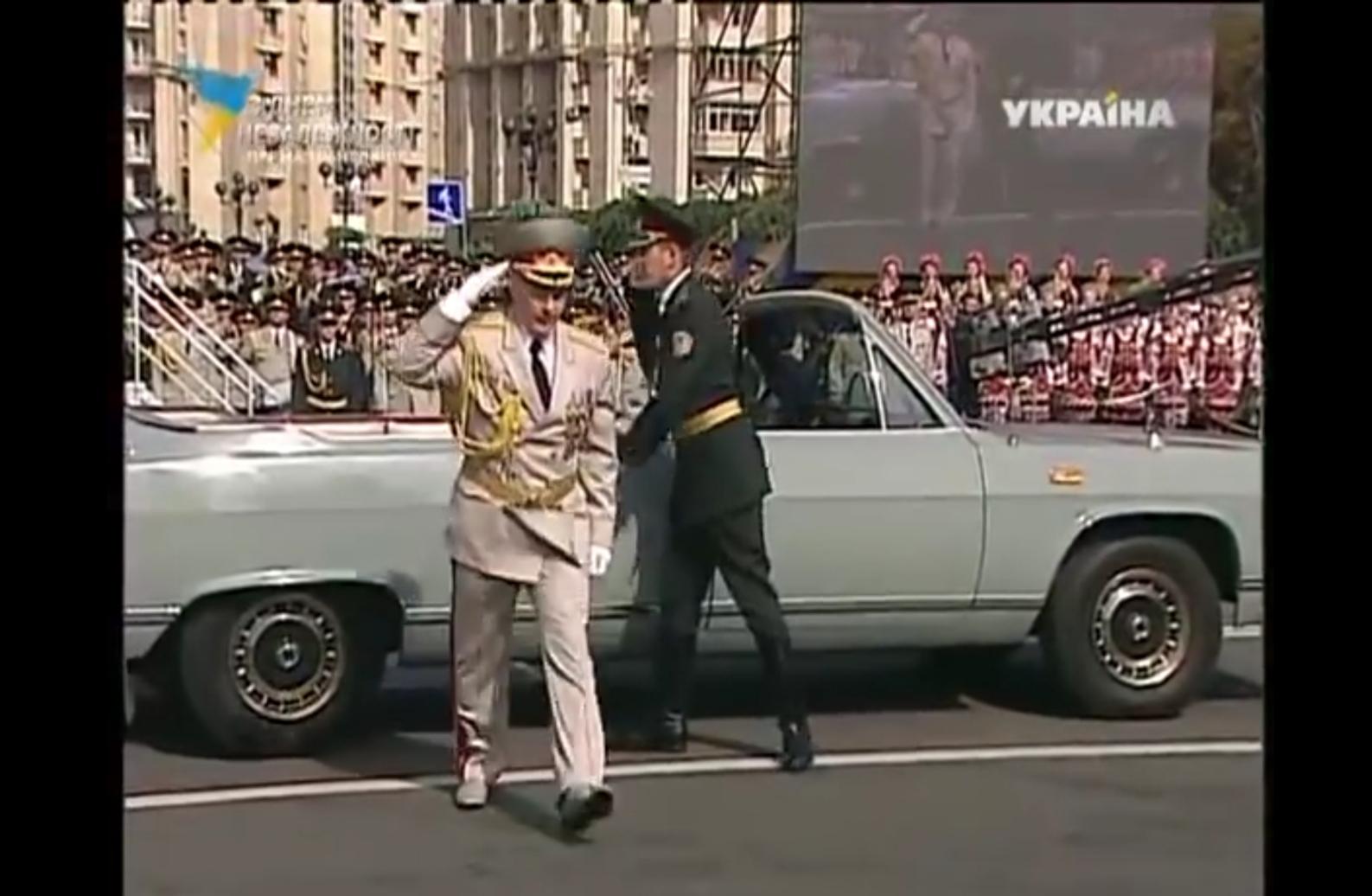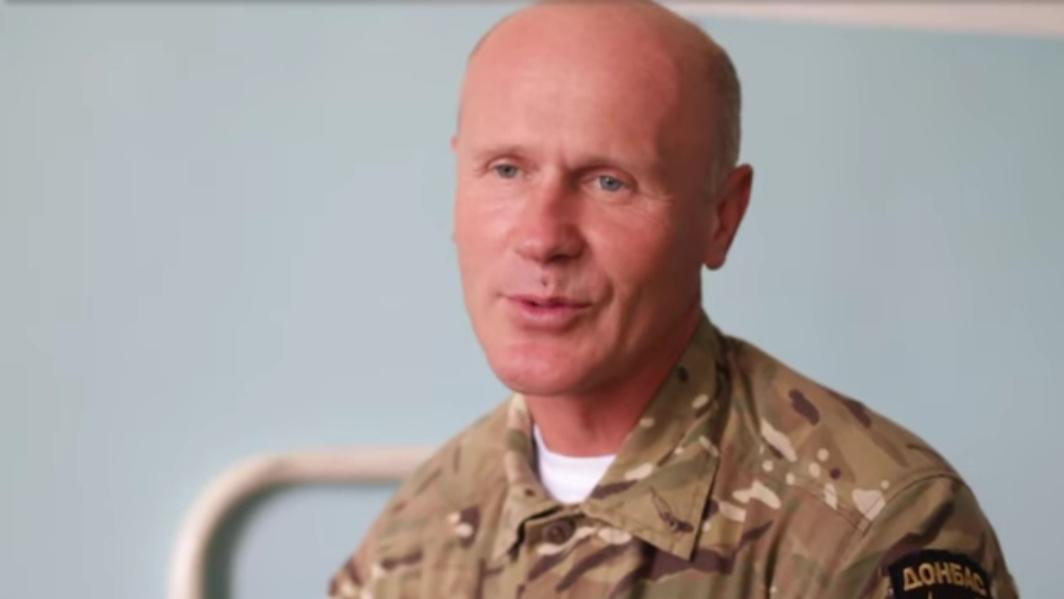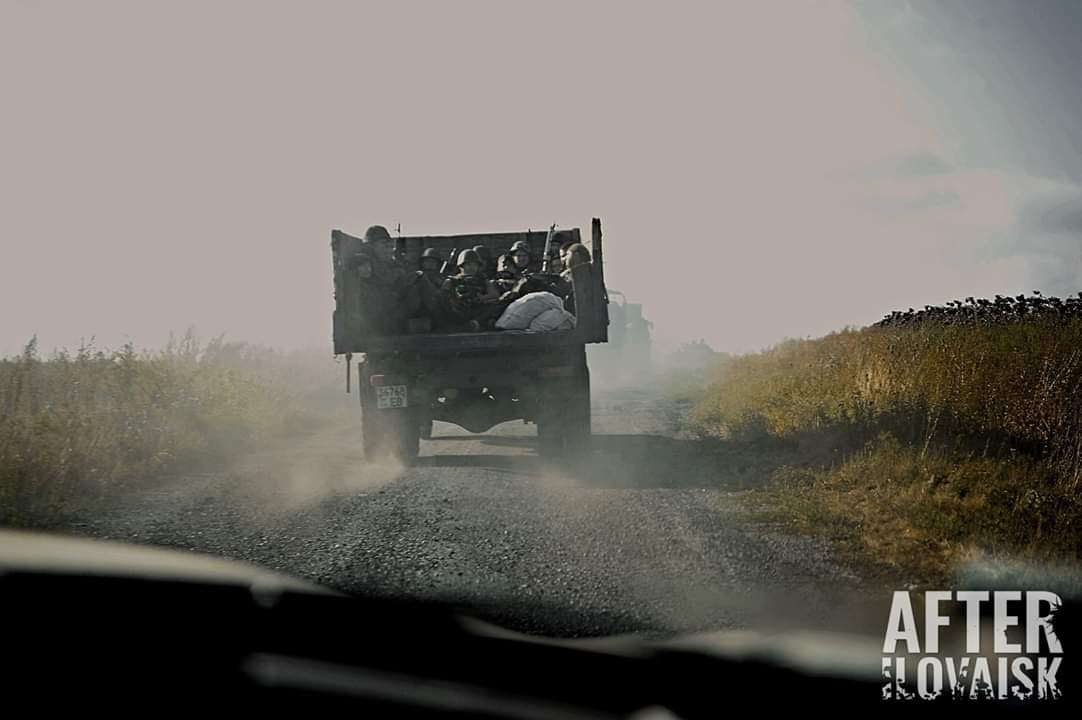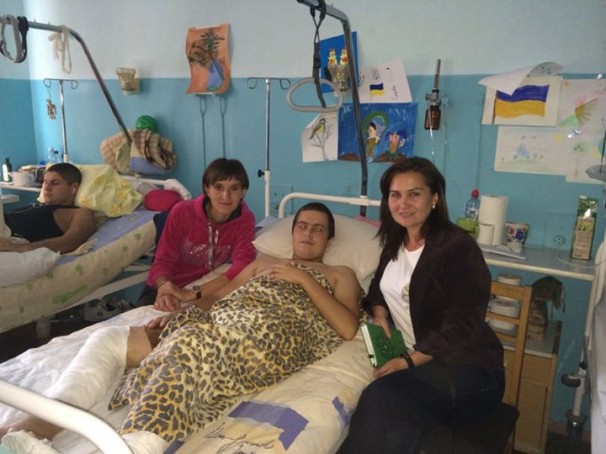29 August is now officially recognized as the Day of Remembrance of the Defenders of Ukraine. President Volodymyr Zelenskyy made the decision as five years ago this day, the largest amount of Ukrainian warriors were killed out of all the period of the war in Donbas. The massacre happened near the city of Ilovaisk, where hundreds of Ukrainian soldiers got entrapped by Russian forces. The battle of Ilovaisk changed the perception of the war in Donbas outside of Ukraine, providing undeniable evidence of Russian intervention. To what extent Ukrainian commanders are responsible for the tragedy remains unknown until now. What remains unchanged since 2014, however, is the acknowledgement of the heroism of Ukraine’s defenders who prevented a full-scale Russian invasion in 2014.
On 27 August, the Headquarters of the Armed Forces of Ukraine released official data on Ukraine’s losses during battles near Ilovaisk in August 2014 on the request of BBC Ukraine. According to it, 220 soldiers were KIA, 44 wounded, 40 MIA, and 13 taken captive. In particular, 129 were killed on 29 August 2014.
However, these numbers do not include the killed defenders among the ranks of the key force of Ukraine at that time, the volunteer units of the Ministry of Internal Affairs which rushed to the defense of their country in 2014 and were fighting side-by-side with the regular forces. Taking them into account, the number of killed soldiers reaches nearly 500 - smaller than the number of roughly 1000 voiced by the Ukrainian parliament’s investigative committee in 2016.
The operation at Ilovaisk

By August 2014, Ilovaisk was seized by the self-proclaimed “Donetsk People’s Republic” (“DNR”). Ukrainian military commanders ordered their forces to regain control over it. The need was then explained by the strategic importance of the city, a railway node which hosted a base of the “DNR” forces. It was also a gate for mercenary fighters from the Russian Federation, as well as for weapons and ammunition from Russia. Last but not least, taking Ilovaisk under control would have helped the Ukrainian forces to seize Donetsk and to break the territory under Russia’s puppet republics in half.
The operation started in August 2014, Ukrainian soldiers complained on the lack of orders from the high commanders.
- Read more about the whole operation: Three years after deadliest battle in Donbas, official investigation skims over guilt of Ukrainian command
- Four years after Ilovaisk, deadliest battle of Donbas, truth is nowhere near
At the end of August 2014, the Ukrainian units in Ilovaisk became encircled due to a direct invasion of Russian forces. When information on the actions of Russian regular forces in Ukraine finally became well-known, negotiations with Russians on providing a green corridor for Ukrainian soldiers commenced. However, they proved to be unreliable.
On the night of 29 August, Russian President Vladimir Putin, who previously denied Russia’s involvement in the conflict, himself appealed to the forces of the so-called “DNR” to organize a green corridor.
By then, the circle had been closed.
In the end, an agreement for a green corridor was reached on the level of the combatants on the ground. Early in the morning of 29 August, Russian paratroopers informed Ukrainians that the rules had changed – the Ukrainian soldiers couldn’t take arms and hardware with them, there would be only one column for the escape, the route would be determined by the Russians. As it turned out later, the route was laid through pre-arranged ambushes.
When the column gathered for the escape, the Russian side started playing for time. The columns were shelled by mortars. They were divided in two and started to move through the identified route but were ambushed. The units which managed to get to the village Chervonosilske organized a defense. There was almost no connection with the commanders. The battle in Chervonosilske lasted for 36 hours.
Those who survived the events of that day escaped by foot through corn and sunflower fields by themselves.
The world now and then: bloody August of 2014 as a turning point
Video from AFTERILOVAISK
llovaisk changed the world’s view of the war in eastern Ukraine. Before the battles for Ilovaisk, the world had been still questioning Russia’s role in the Donbas events. Describing the situation in Donbas, western media quite often used the words “rebels” or “pro-Russian” separatists in their publications, which shifted the focus away from the instigator of the war.
Only in the second half of August 2014 did the narratives start to change. More and more often, world media started writing about Russia’s intervention in Ukraine. In particular, about the movement of Russian troops. One of the turning points was the news about Ukrainian forces capturing ten Russian paratroopers near the village Dzerkalne in Donetsk Oblast during the battles near Ilovaisk.
"Russian soldiers detained in Ukraine; leaders meet in Minsk,” CNN wrote on 26 August, 2014
The Business Insider published an article titled “Ukrainian Sergeant: 'This Is Now A War With Russia'” on 27 August.
“Ukraine Reports Russian Invasion on a New Front,”
wrote the New York Times the same day 27 August, however still referring to the de-facto war as a conflict.
“During the last few days, it seems that foreign media finally started to wake up to reality. We are talking about a Russian intervention,” wrote Ukrainian media watchdog Detektor Media on 28 August.
Even though nowadays the international community mostly recognizes the intervention, there is still room left for prejudice and sometimes Russia’s role in the de-facto Donbas remains underestimated. For example, last year, the UN released a report on Ilovaisk called “Human rights violations and abuses and international humanitarian law violations committed in the context of the Ilovaisk events in August 2014.” The terminology “armed groups” was the most common descriptor which the report gave when talking about those who opposed the Ukrainian forces in 2014. Ex-defence Minister of Ukraine, reserve colonel Anatoliy Hrytsenko stated that he does not view the report as objective and is confident that it is politically biased.
“The UN has not dared to say even one word towards Russia. Don’t they know that if there was no fact of Russian aggression, there would be no Ilovaisk and Debaltseve? You can’t give information out of context,” Hrytsenko told Glavcom.
Five years later, foreign actors are still providing evidence of Russia’s intervention in the Ilovaisk battles. For example, recently the London-based investigation group Forensic Architecture published satellite images of Russia’s armed motorcades on Ukrainian territory and numerous facts of presence of the tank T-72B3. At the moment, it was a new model used only by Russian forces. According to the researchers, Russia used the hardware in 2014 during the Ilovaisk battles.
The inner military policy during the tragedy is still important, but still unknown

Writing about the new evidence provided by Forensic Architecture, The Guardian stressed the importance of providing the new evidence to the European Court of Human Rights for establishing Moscow’s responsibility in the war, under conditions when Russia denies all involvement.
Since 2014 and until now the actions of Ukrainian generals remain the biggest unknown and are still heavily disputed. One of the main questions is whether the Independence Day military parade on 24 August 2014 was really needed, with armor on display in the capital while Ukrainian troops were in dire straits in the East.
Five years later, Oleksandr Deynega, a soldier from the Donbas volunteer battalion, remembers that on the night of 23 to 24th of August, the eve of Ukraine’s Independence Day, he and his comrades were shelled by artillery and Grads.
“While there is a parade in Kyiv, we are here on the frontline. As the soldiers say, with naked assess - we have neither equipment and proper arms, nor people,” Rostyslav Shaposhnykov, a journalist who was in the Ilovaisk boiler together with the soldiers, told.
However, later the Prosecutor General’s Office investigated whether the involvement of hardware and soldiers during the parade on the Independence Day in 2014 impacted the combat ability of the Ukrainian forces in Donbas, concluding that it didn’t.
While the parade could be considered a superficial issue, a much more important question remains: is Ukraine’s high military command guilty of the high losses during Ilovaisk?
The main Ukrainian force back then were the volunteer battalions consisting of ordinary men and women, many of whom had no relation to military professions at all. Lacking proper equipment and hardware, they nonetheless fought with regular units side-by-side.
“In fact, they [volunteer battalions] now implement tasks of the armed forces which should have been set for armored and motorized infantry brigades, without heavy weapons,” Anton Herashchenko, the Minister of Internal Affairs advisor said in 2014.
Journalist Serhii Ruzhynskyi even assumed that the Ukrainian government was seemingly no less afraid of volunteers than of the so-called separatists and Vladimir Putin, consciously planning the operations so that the volunteer battalions would bear big losses. The journalist described the military volunteers as a logical continuation of the Euromaidan revolution.
“The volunteers stated many times that after establishing peace in Donbas they will go to Kyiv to complete the Revolution of Dignity cleaning the government from corrupts... The soldiers have more than enough questions to those [in power], as well as to the heads of law enforcement institutions regarding the effectiveness of the high command, numerous facts of corruption in the army, catastrophical material support of the front, attitude to ordinary defenders of the country, payment of compensation to the wounded and dead, and so on,” the journalist summarized.
In 2016 and 2017, the Prosecutor General’s Office presented findings of probes into the Ilovaisk battle.
Individual mistakes of the commanders of the Anti-Terrorist Operation, as the operation against Russian-backed forces was called at in 2014, were named among the reasons leading to Russia’s intervention. However, according to the Prosecutor General’s Office, these mistakes did not directly cause the death of Ukrainian soldiers and the losses of armaments and hardware. The low combat capability of the Ukrainian army at that time and desertion were named as major causes leading to the dire outcome.
Meanwhile, the actual participants of the events still insist on investigating the high command’s actions. For example, the journalist Yuriy Butusov, editor-in-chief of the media Censor.net and member of the commission of the investigation of the Ilovaisk tragedy in 2017 repeatedly addresses the issue of the responsibility of Ukrainian generals. In 2018, on the fourth anniversary of the start of the Ilovaisk operation, he published copies of military orders to the 40th battalion proving that it was the Ukrainian generals who gave the orders to start the disastrous endeavor and should thus carry responsibility for the losses, dispelling versions that the volunteer battalions made the decision to start the operation on liberating Ilovaisk themselves.
A witness of the events
On the fifth anniversary of the tragedy Larysa Artiugina, the director of “How We Became Military Volunteers,” a documentary telling the story of the Donbas battalion soldiers who went through the Ilovaisk events, released the uncut interview of the soldier Leonid Kovalenko (callsign Hroza).

In the video shot on 8 September 2014, in the hospital to which the soldier managed to get just after the events, the soldier tells his story of escape.
“When we were escaping, we were told that there is an agreement on the green corridor. Everyone was relaxed as we were coming back home...But we got ambushed, we were hit by tanks and machine guns,” Leonid told. According to him, about a half of those who were in one vehicle with him died, even those who jumped out of it to escape the explosions.
However, the soldier and a part of his comrades managed to hit two Russian tanks and some armored vehicles. After that, the Russian officers decided to negotiate with them.
“They said they were waiting for us for two days. The tanks already had been dug and firing points put into places. However we found out about the escape only the evening before. They knew earlier than we that we were going to pass this road.”
In the video, the soldier says directly that he considers himself betrayed by the General Staff.
He also added that the situation would be different if the battle was equal.
In her post
for the video, Artiugina asked president Zelenskyy to find out the truthful information on whether the General Staff did not betray the volunteers, or the opposite.
“Release the conversation of the president Petro Poroshenko with Putin on the ‘green corridor,’ if they took place. Or the order of the Supreme Commander or those who signed it, Muzhenko-Heletey [then Chief of General Staff and the Head of the Armed Forces and Valeriy Heletey, then Minister of Defence], on the escape from Ilovaisk during the shelling of the regular Russian forces.”
Recently, Ivan Aparshyn, the defense expert of Zelenskyy's team, stated that soon the truth about Ilovaisk will be released and the officials who made decisions or those who were inactive will be brought to justice.
Muzhenko held the position of Chief of General Staff and the Head of the Armed Forces of Ukraine until May 2019. Zelenskyy replaced him with Ruslan Khomchak. During the battles near Ilovaisk, Khomchak held the position of the commander of sector B of the Anti-Terrorist Operation. His actions at that time were ambivalently evaluated. His critics accused him of incompetence and betrayal. However, the commanders of the battalions involved in Ilovaisk perceived his newly appointment positively.
Heletey, in his turn, headed the State Guard of Ukraine since October 2014. After Zelenskyy was elected, Heletey wrote a resignation report; later Zelenskyy dismissed him.
Rethinking the role of the volunteer soldiers
Five years after the battle of Ilovaisk, Ukrainian society continues appraising the soldiers who took part in the Ilovaisk events, particularly the volunteers who left their ordinary lives to go to war in 2014. This has resulted in the release of new books and documentaries dedicated to the events.
On 30 and 31 August, the premiere of the documentary “Ilovaisk. The Knights of Heaven” is scheduled. It tells about the 15 volunteer soldiers of the regiment Dnipro-1 who died in Ilovaisk through archive materials and interviews with relatives and comrades of the fallen heroes.
“It is an attempt to understand why this tragedy happened, whether it was possible to avoid it and tells the story of those who gave their life for Ukraine’s freedom,” the organizers say.
The premiere of the feature film Ilovaisk 2014 based on the real events of the time is scheduled for 29 August
Maks Levin and Markiyan Lyseiko, documentary photographers who were working in Ilovaisk during 23-29 August 2014 and had escaped through the so-called green corridor together with Ukrainian soldiers launched the documentary project AFTERILOVAISK. It is aimed at preserving the memory of the people and the tragic events.
"This is the story of boys who one day became men. Despite their age or sex, to that matter. There were women in Ilovaisk who displayed the same qualies. War gave them the opportunity.
This is the story of the point of no return that each of them went through. While losing a friend. Seeing the eyes of Russians who watched them while they were walking into a trap. Returning from captivity. Having lived through everything to remain in Ilovaisk forever.
This is a story of a choice. After all, in 2014, one could find many reasons to not go to war - ‘an ill mom,’ ‘wife and children,’ ‘I don’t know how to fight’ or ‘I will do more for the country at work.’ There was one reason to go - caring.
We are all very fortunate to live next to People who deliberately made this choice. But, we do not always know them, and even while knowing - we do not always notice them. Because we still have not yet fully realized this story and have not yet learned this lesson," one of the posts of the project says.
The project consists of documentary records of testimonies of Ukrainian soldiers and military volunteers, interviews with witnesses of events and relatives of the victims. The authors of the project also plan to publish a photobook and to make a documentary about people who went through Ilovaisk. On August 29, they are launching an English-language version of the site.





